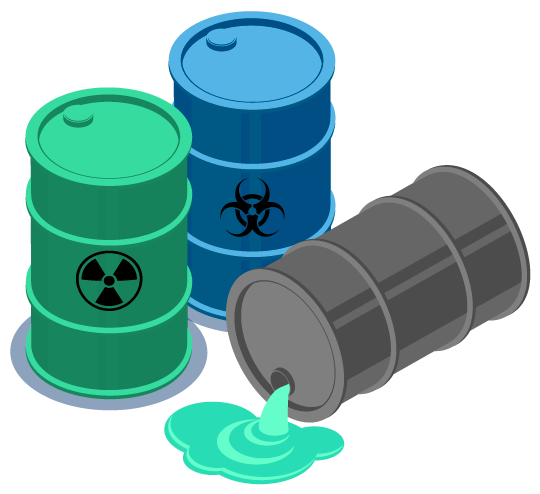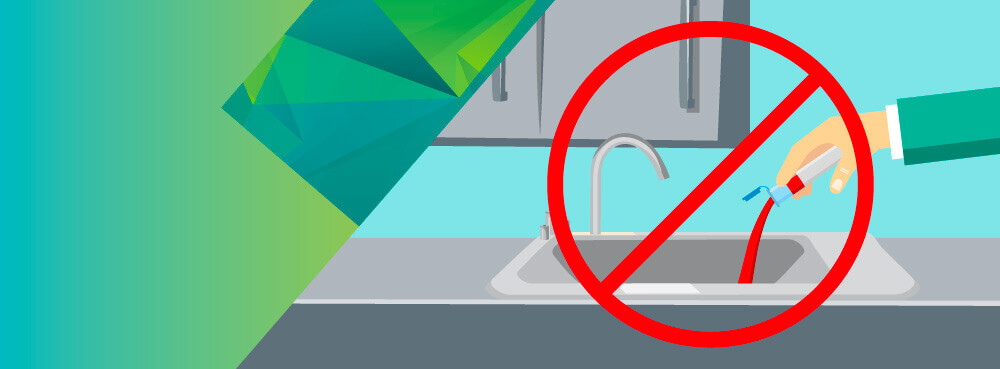Specialist Liquid Waste Removal Melbourne: Maintaining Your Environment Tidy
How Fluid Waste Disposal Functions: An In-depth Summary of Methods and Technologies Employed

Review of Fluid Waste Kind
The intricacy of fluid waste kinds demands a detailed understanding of their characteristics and implications for disposal. Liquid waste can broadly be categorized right into numerous kinds, including industrial, metropolitan, farming, and harmful waste. Each classification displays unique homes, calling for specific management approaches to alleviate ecological and health and wellness dangers.
Industrial liquid waste stems from producing procedures and frequently contains a series of impurities, such as hefty metals, solvents, and organic compounds. Metropolitan fluid waste, primarily consisting of wastewater from houses and business facilities, includes organic matter, nutrients, and pathogens (industrial wastewater treatment). Agricultural liquid waste, including drainage from farms, may consist of plant foods, pesticides, and pet waste, positioning dangers to water quality and ecological communities
Unsafe liquid waste is identified by its poisoning, reactivity, or potential to create injury. This group consists of compounds like acids, bases, and particular chemicals that require strict handling and disposal protocols. Recognizing these varied fluid waste kinds is crucial for establishing efficient disposal approaches and ensuring compliance with ecological laws. Appropriate classification and characterization are necessary for applying ideal treatment techniques and minimizing the damaging effect on public health and the atmosphere.
Physical Therapy Methods

Screening is the initial action, where bigger bits and debris are eliminated from the fluid waste using displays or grates. In sedimentation containers, heavier bits work out at the bottom, developing a sludge layer, while the cleared up liquid can be more dealt with.
Purification is one more vital technique that involves passing the liquid with permeable products, such as sand or membrane layers, to record smaller bits. This action improves the quality of the liquid, making it suitable for succeeding treatment processes.

Chemical Treatment Methods
Chemical treatment methods are crucial for efficiently managing liquid waste, especially in resolving dissolved and colloidal contaminants that physical approaches may not effectively remove. These methods utilize different chemical representatives to neutralize, speed up, or transform harmful substances right into less harmful kinds.
One usual technique is coagulation and flocculation, where chemicals such as alum or ferric chloride are contributed to promote the gathering of suspended bits. This procedure enhances sedimentation, permitting simpler elimination of the resulting sludge. In addition, oxidation procedures, using agents like chlorine or ozone, are used to break down complicated natural compounds and virus, making the waste more secure for discharge or additional treatment.
Neutralization is an additional essential technique, which changes the pH of acidic or alkaline waste streams to neutral degrees, protecting against potential harm to downstream systems and the atmosphere. Moreover, progressed oxidation processes (AOPs) use mixes of oxidants and ultraviolet light to deteriorate persistent pollutants, achieving a greater level of therapy effectiveness.
Biological Treatment Processes
Biological therapy procedures play a critical duty in the management click this link of fluid waste by using bacteria to decay organic matter and minimize impurity levels. These procedures can be extensively classified into cardio and anaerobic treatments, each utilizing details microbial areas to attain effective waste deterioration.
Cardiovascular therapy involves using oxygen to help with the malfunction of natural materials by germs. This procedure is typically implemented in turned on sludge systems, where oygenation storage tanks offer a helpful atmosphere for microbial development, leading to the oxidation of organic contaminants. The resultant biomass can be separated from dealt with effluent with sedimentation.
On the other hand, anaerobic treatment takes place in the lack of oxygen, counting on different germs to break down organic matter. This method is specifically useful for high-strength waste, as it produces biogas, a renewable resource resource, while lowering sludge manufacturing. Technologies such as anaerobic digesters are often utilized in local and commercial applications.
Both cardio and anaerobic biological therapies not just lessen the environmental impact of liquid waste however additionally website here assist in resource recuperation, making them essential components of sustainable waste administration approaches. Their performance, adaptability, and efficiency sustain their extensive execution across numerous industries.
Emerging Technologies in Disposal
Ingenious methods to fluid garbage disposal are swiftly evolving, driven by developments in modern technology and an increasing focus on sustainability. Amongst these emerging technologies, membrane layer bioreactors (MBRs) have actually gotten grip for their capacity to combine organic treatment with membrane layer purification, causing top notch effluent that can be recycled in different applications. MBRs make it possible for smaller sized impacts and a lot more efficient procedures contrasted to traditional systems.
An additional appealing development is using anaerobic digestion incorporated with nutrient recuperation innovations, which not only treats liquid waste yet additionally generates biogas and recuperates important nutrients like nitrogen and phosphorus. This double advantage improves source efficiency and lowers environmental effect.
Furthermore, advanced oxidation processes (AOPs) are being adopted for the degradation over at this website of complex organic toxins. These methods make use of effective oxidants and catalysts to break down contaminants at the molecular degree, providing an extremely efficient option for tough waste streams.
Moreover, the combination of expert system and artificial intelligence in waste management systems is optimizing functional efficiency and anticipating maintenance, causing minimized expenses and improved environmental compliance. These innovations mirror a considerable change in the direction of more efficient and sustainable liquid waste disposal methods.
Verdict
In conclusion, reliable fluid waste disposal demands a detailed understanding of numerous strategies and technologies. By continually advancing these approaches, it becomes possible to attend to the expanding challenges linked with liquid waste, eventually contributing to environmental defense and source recuperation.
Fluid waste disposal is an essential element of ecological administration, requiring a detailed understanding of numerous techniques and technologies customized to various waste kinds. Fluid waste can generally be classified into several kinds, consisting of industrial, metropolitan, agricultural, and hazardous waste. Agricultural fluid waste, consisting of runoff from ranches, might include fertilizers, chemicals, and animal waste, positioning threats to water high quality and communities.
Various physical therapy approaches play a crucial role in taking care of liquid waste successfully - industrial wastewater treatment.In verdict, effective fluid waste disposal necessitates a thorough understanding of numerous methods and modern technologies